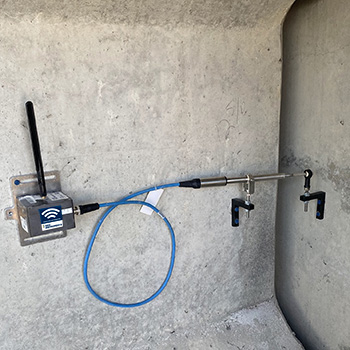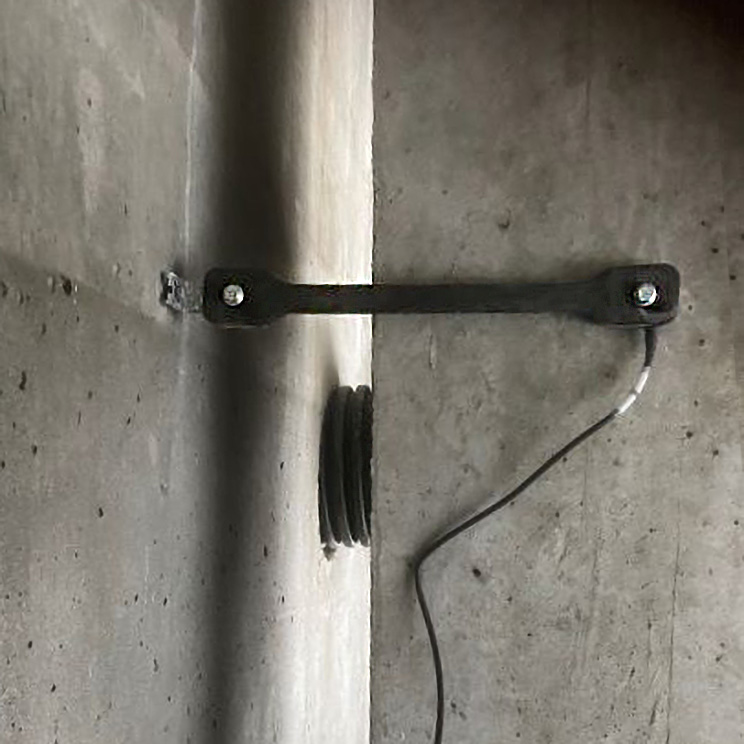Crackmeters & Jointmeters
Crackmeters and jointmeters are used to monitor movement at cracks and joints in structures. Datasheet
Applications
Typical applications include:
- Monitoring joints to provide early warning of performance problems.
- Monitoring joints and cracks in structures that could be affected by nearby construction activities.
- Monitoring cracks in structures that have experienced seismic activity.
Crackmeters
The crackmeter consists of a displacement sensor and a set of anchors. The anchors are installed on opposite sides of the crack. The sensor is then fixed to the anchors via ball joints, which accommodate movement in other planes.
Jointmeters
Jointmeters consist of two or more displacement sensors mounted in a frame that provides a common reference for measurements. The frame is installed on one side of the joint. One end of each sensor is fixed to the frame. The other end is fixed to an anchor in the structure.
Data Acquisition & Processing
Signal cables from the crackmeter or jointmeter are connected to a wireless data logger or sensor interface node, either of which obtains readings at regular intervals and transmits them offsite to GeoCloud servers for processing.
The initial reading establishes a the baseline. Subsequent readings are compared to the baseline to determine changes.
The GeoCloud server applies converts readings to the desired engineering unit, and checks the reading against alarm thresholds.
Alerts are sent to smartphones and desktop PCs by text message or email. All readings are then used to update trendplots and planviews on the project website.
Displacement Sensors
Vibrating Wire Sensor
Ranges: 1, 2, 4, and 6 inch.
Resolution: 0.025% FS.
Accuracy: ± 0.1% FS.
Linearity: < 0.5% FS.
Operation: -20 to +80 °C.
Linear Potentiometer Sensor
Ranges: 1, 2, 4, 6 inch
Resolution: 0.0015% FS.
Accuracy: ± 0.15% FS.
Operation: -40 to +85 °C.
ElastiSense Displacement Sensor
Ranges: 5, 20, 50, 100, 250 mm
(.2, .8, 2, 4, 10 inch)
Resolution: 0.01% FS.
Accuracy: ± 0.5% FS.
Operation: -40 to +85 or 105 °C.
ElastiSense displacement sensors



